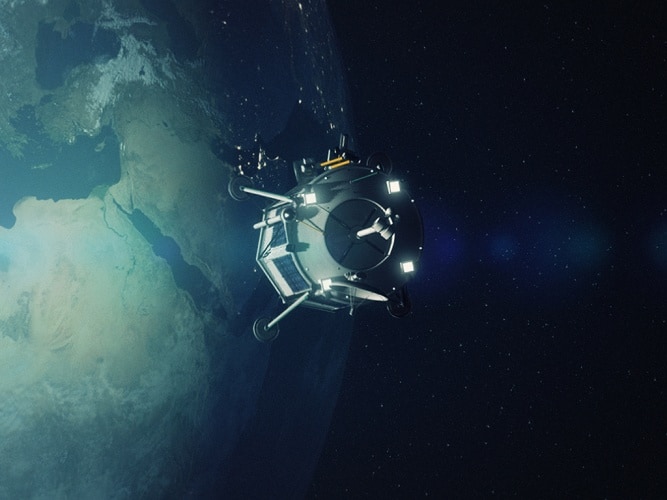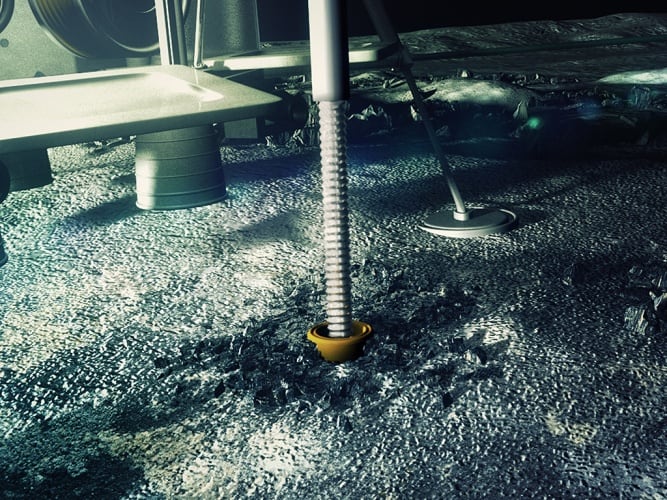We seem to be in one of the most exciting periods in space exploration for many years. Last week’s momentous comet landing by ESA’s Rosetta/Philae mission — which, incidentally, will be the subject of our next readers’ Q&A feature — heralds the start of a sequence of ambitious projects which will expand our knowledge of the Solar System, of the foundation theories of physics, and may see humans move towards our first steps on Mars. Notable missions include JUICE, an ESA project to send a probe to Callisto, Ganymede and Europa, the icy moons of Jupiter, some of which are candidates for the presence of extraterrestrial marine life; LISA Pathfinder, a pilot for a larger mission to detect gravitational waves in space; and the upcoming test launch of NASA’s Orion Capsule next month, the agency’s new crew-rated spacecraft which will spearhead missions in the coming decades to land astronauts on an asteroid, possibly the moon and eventually Mars.
And to this list we must now add Lunar Mission One, a UK attempt to land a robotic probe on the Moon. This is an unusual one, because in an attempt to increase public engagement with space exploration, it will be crowdfunded.

Public subscription to finance voyages of discovery is not a new concept, of course; it has a long history in terrestrial exploration, especially to the poles. It isn’t even new in space science; recently, for example, asteroid mining company Planetary Resources sought crowdfunding for its efforts to set space telescopes in orbit.
But LM1 is certainly the biggest attempt so far. It is aiming to raise £600,000 in the next month to finance initial project management and planning, and a total of £500million over the next four years from members of the public who want to send video content or even hair samples for a time capsule to be buried at the probe’s survey site at the Lunar South Pole.

There are sure to be takers, although half a billion pounds is extremely ambitious; as I write this, the project Kickstarter is already more than ten percent towards it goal. I’m not entirely sure why you’d want to send your hair to the Moon — I have enough trouble collecting shed hair in my flat; I really don’t want it to pollute a planetary body as well.
And while a personal stake in the mission is a good hook for the project, there seems to be something missing: namely, an attempt to get people involved with the real human factor of space missions, which is the engineering needed to design the probe and get it across the quarter of a million mile abyss between our home and our satellite. Moon missions have suffered somewhat from the success of Apollo, in that many people don’t understand why we’d want to return to the Moon; especially if the plan is to send a robotic probe rather than a crewed lander. The team needs urgently to mount an educational programme to explain this. Its plan to drill up to 100m into the lunar surface might be a good starting point, as this wasn’t even attempted by Apollo and it’s therefore certain to produce new science.

Lunar Missions Ltd, the holding company behind the mission, could do a lot worse than emulate the educational programme of Bloodhound SSC, which is doing a sterling job of communicating the engineering challenges of propelling a car at 1000mph across the Earth’s surface. It even has students building their own model rocket cars. Setting aside a portion of the LM1 budget to fund school rocket clubs, for example, might be a great way to actually get people enthused about rocket engineering (which, as we’ve established, is a lot harder than rocket science) rather than to just go ‘wow, our home movie’s on the Moon and so are my hair clippings’.
Space is something which we need to get people involved with, rather than just wondering at. There’s plenty of interest already — I wore a T-shirt with the outlines of the most significant solar system exploration probes to a comics festival last weekend, and got asked plenty of questions about it — but if we’re going to keep exploring, and keep funding the insitutions that explore, people need to see it as something they can actively do. Crowdfunding is only one way to achieve that, although LM1 has The Engineer’s enthusiastic support.










Water Sector Talent Exodus Could Cripple The Sector
Maybe if things are essential for the running of a country and we want to pay a fair price we should be running these utilities on a not for profit...